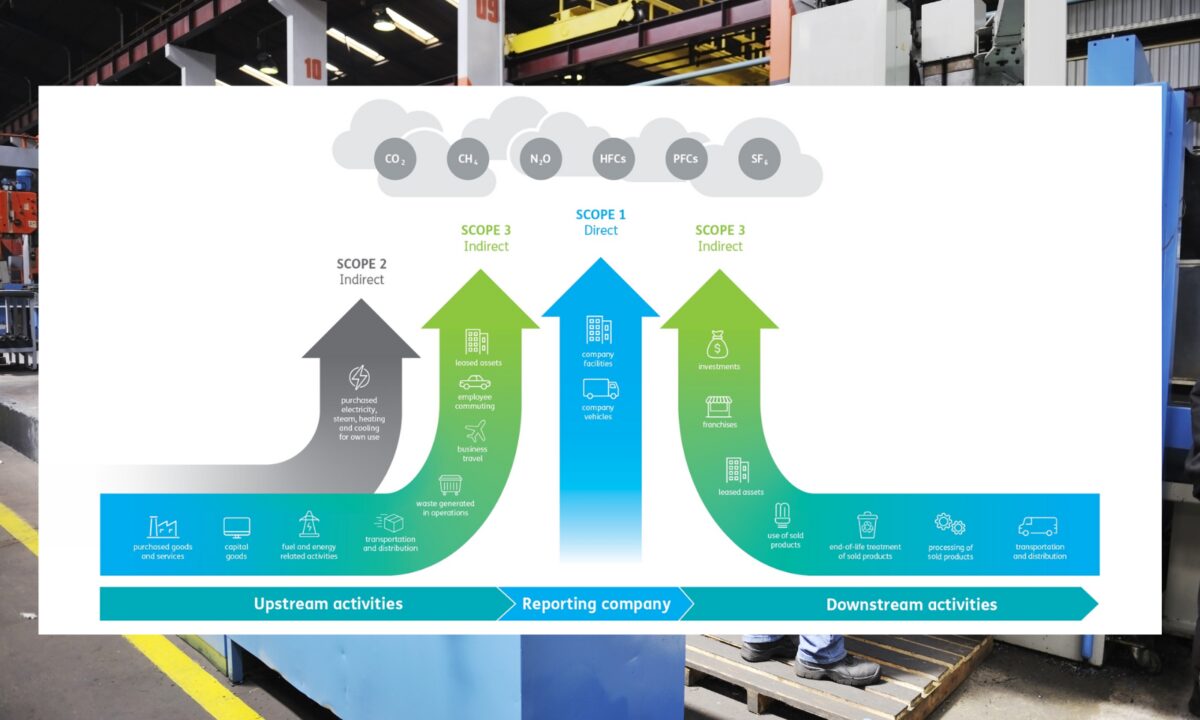What are the limits of free carbon footprint tools for businesses?
“Can’t we just use a free footprinting tool?”
It’s a fair question – and one that comes up a lot when our clients are considering our industry-leading carbon accounting toolkit for SMEs. These days there are plenty of online tools available, and many are free. Free carbon footprinting tools for businesses can be a great starting point, but they often have limitations that can hinder serious efforts to reduce your emissions.
While they might be able to have a pretty good stab at estimations, from our experience, you simply won’t get an accurate full-scope breakdown for an entire business’s operations.
To cover your organisation’s full value chain and include a truly robust assessment of all the emissions created by employees, suppliers, and your customers after your product has left the shelves requires a comprehensive approach.
Often, the majority of a business’s emissions sit under scope 3, and many free/cheap online tools have a limited approach to calculating this.

Here's a breakdown of some key limitations of free carbon accounting tools that you should consider when making your decision:
- Limited features – particularly across scopes 1, 2 and 3: Free tools often offer basic features for calculating and tracking emissions. They may lack advanced functionalities such as scenario analysis, supply chain emissions tracking, and comprehensive reporting. Free tools often use only “spend-based” data, which is not as robust or realistic as “activity data” - especially for scope 1 and 2. Spend-based data gives a general idea of emissions per pound spent. However, it might not be accurate for every company, as it relies on industry averages, not the specific activities of a single business. The activity-based method gathers detailed data from across a company's operations to give a more comprehensive picture of its emissions.
- Data accuracy: Accuracy of carbon accounting relies heavily on data input. Free tools may not provide the level of data accuracy and validation checks found in more sophisticated, paid-for solutions. This can result in less reliable emission calculations.
- Scalability issues: Free tools may have limitations in handling large datasets and may not be suitable for growing businesses, or those with complex operations or significant emissions.
- Integration with other systems: You may need your carbon accounting software to seamlessly integrate with other business systems, but some free tools make it challenging to factor carbon accounting into broader business operations and decision-making processes.
- Limited support and updates: Free tools may not have regular updates or comprehensive customer support. This can be a challenge if businesses encounter issues or need assistance with the software.
- Regulatory compliance: Some industries and regions have specific regulatory requirements for carbon reporting. Free tools may not always be equipped to handle these specific compliance needs, putting businesses at risk of non-compliance.
- Security concerns: Free tools might not prioritise the same level of data security as more robust, paid-for solutions. This could pose a risk, especially for businesses dealing with sensitive information.
- Customisation and flexibility: Your business is unique, but free tools may lack the customization options needed to reflect specialised reporting requirements or specific industry standards. This can limit their flexibility.
- Limited analysis and insights: Free tools may not provide in-depth analysis and actionable insights beyond basic emission tracking, while advanced analytics and reporting capabilities are often limited.
- Long-term viability: The sustainability of free tools might be uncertain. If the developer discontinues support or updates, businesses using these tools may face challenges in the long run, and could be forced to start afresh with a different platform.
In summary, free carbon footprinting tools can give a decent estimate of a business’ emissions, but for serious sustainability efforts, this might not be sufficient. Here's when you might consider a paid option:
- Need for quality: If robust emission data is crucial for decision-making or reporting purposes
- Complex operations: For businesses with extensive supply chains, diverse activities, or a large geographic footprint
- Commitment to reduction: If a business has a serious commitment to reducing emissions and needs advanced tools for tracking progress.

Paid carbon footprinting tools often include features like:
- More comprehensive scope 3 emissions calculations
- Industry-specific emission factors
- More advanced data analysis and reporting capabilities
- Scalability to handle large datasets
- Dedicated customer support
At Bioregional, we’re big fans of Compare Your Footprint (CYF), and use it to power both our net-zero consultancy work with clients, and our do-it-yourself carbon accounting toolkit for SMEs. Here’s why we think it’s worth investing in:
- Compared to a lot of other tools on the market, CYF offers greater flexibility and a greater number of emissions factors – these are essentially conversion factors that allow you to estimate the amount of CO2e emissions associated with a particular activity, such as the electricity you use.
- CYF also creates robust methodologies for reporting and creates new emissions factors for products/services that are then added to the database for everyone to use.
- Finally, CYF also includes the Small World Consulting (SWC) factors, developed by the globally-renowned carbon accounting expert Professor Mike Berners-Lee. In short – by using our toolkit, you’ll have much more confidence in the quality of your carbon footprint baseline than you would if you used more limited free or low-cost tools, which are often geared towards providing initial estimates.
Ultimately, the choice between a free or paid tool depends on the specific needs and resources of your business.
If you’re weighing up your options ahead of creating your baseline carbon footprint, we’d be happy to offer our advice. If a free tool could do the job, we won’t hesitate to point you in that direction, but if a more robust approach, such as our all-in-one carbon accounting toolkit would be a better fit, we’ll explain why.
Book an intro call with Katri Hastings below.






